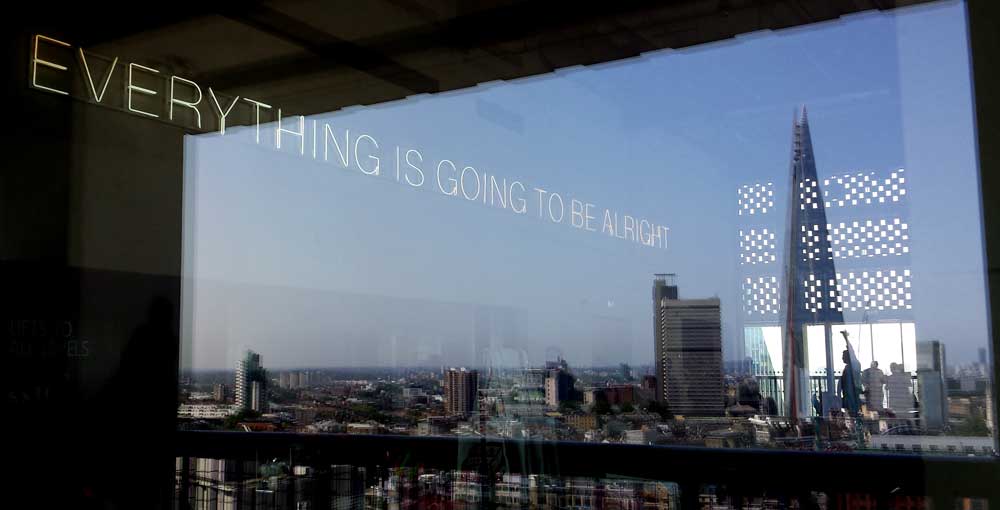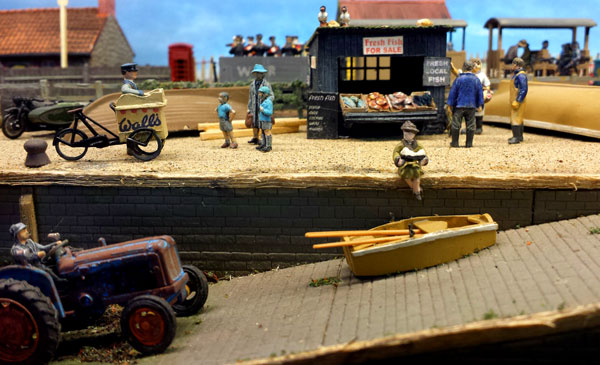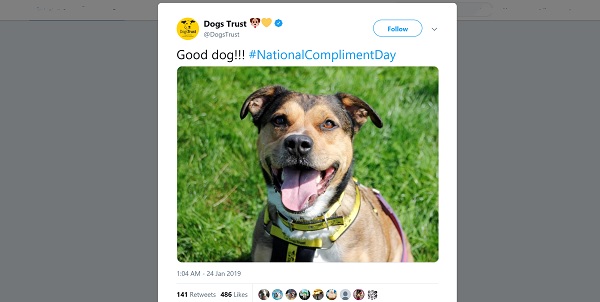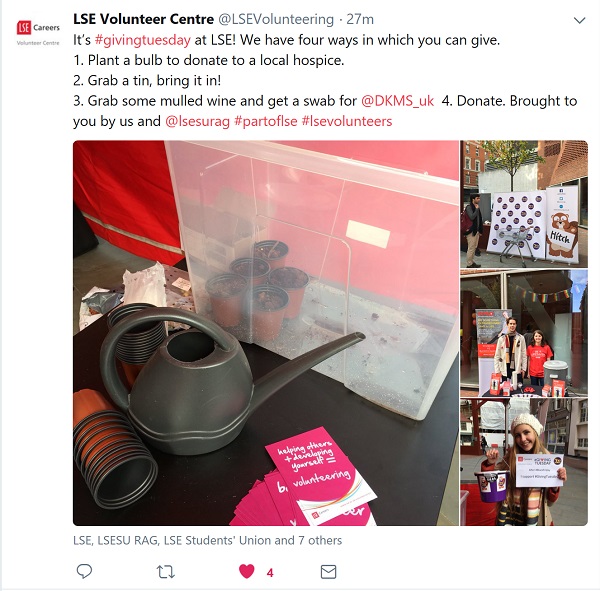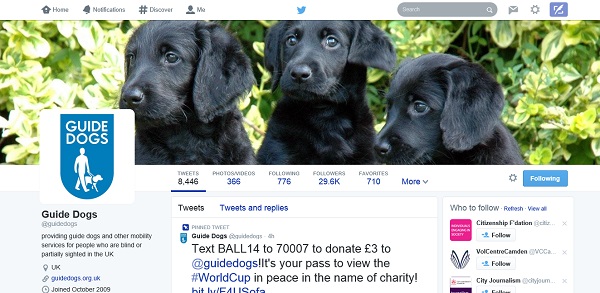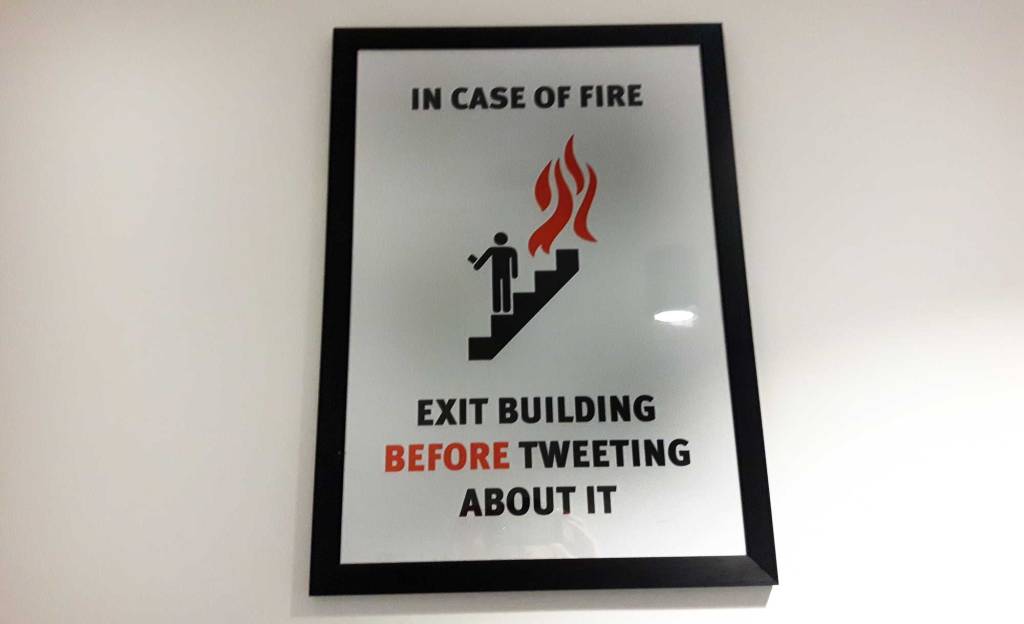
I don’t know about you, but watching the very speedy ‘developments’ at Twitter over the past few weeks has been very unsettling. My timeline is full of doom about the end of Twitter. News about layoffs (including the accessibility team), verification rule changes, platform instability and high-profile departures has been relentless. It’s only been two and a half weeks.
I have been a heavy Twitter user since 2008. It has been instrumental to my freelance career as a way of keeping an eye on trends in the sector as well as making connections. It has also been a place for information, friendships and silliness.
And so, I watch and wait (along with everyone else – 85% of a recent Charity Comms poll), hoping that the disruption settles and the platform carries on. We’ll see…..
Twitter – what next?
There are some useful articles looking at what’s happened already and what might come.
- Should charities stay on Elon Musk’s Twitter? Helen Olszowska for Charity Digital
- BIRD FLOWN: Is it time for the public sector to follow Stephen Fry off Twitter? Dan Slee (10 Nov)
- Here’s how a Twitter engineer says it will break in the coming weeks – MIT Technology review
- TWITTER SPLITTER: Is paying for a blue tick on Twitter worth it if you’re public sector? Dan Slee (2 Nov)
- The last days of Twitter – Matt Jukes
- The future of Twitter seems to be in doubt – Richard Murphy thread (5 Nov)
A force for good
We have long since moved on from peak Twitter. Day-to-day engagement is not what it used to be. Blame the algorithm or drop in daily users. But it is still the go-to place for breaking news, high-volume comms and for conversation. It is used by journalists and decision-makers. It is still a key part of any channel strategy.
Think about the recent #AttackOnNature response. RSPB’s comms activity was huge on Twitter. The speed and scale of the comms was best suited to the channel and helped to gain lots of momentum for the campaign. This noise got it noticed by the press, hundreds of other organisations who got involved, and thousands of people who took action. Was this the last big hurrah for charity Twitter?

It made me think back to how Twitter has been embraced and experimented with by the charity sector. About the impact it has helped us all make. Here then, is almost a round-up of round-ups, with some highlights.
Fundraising
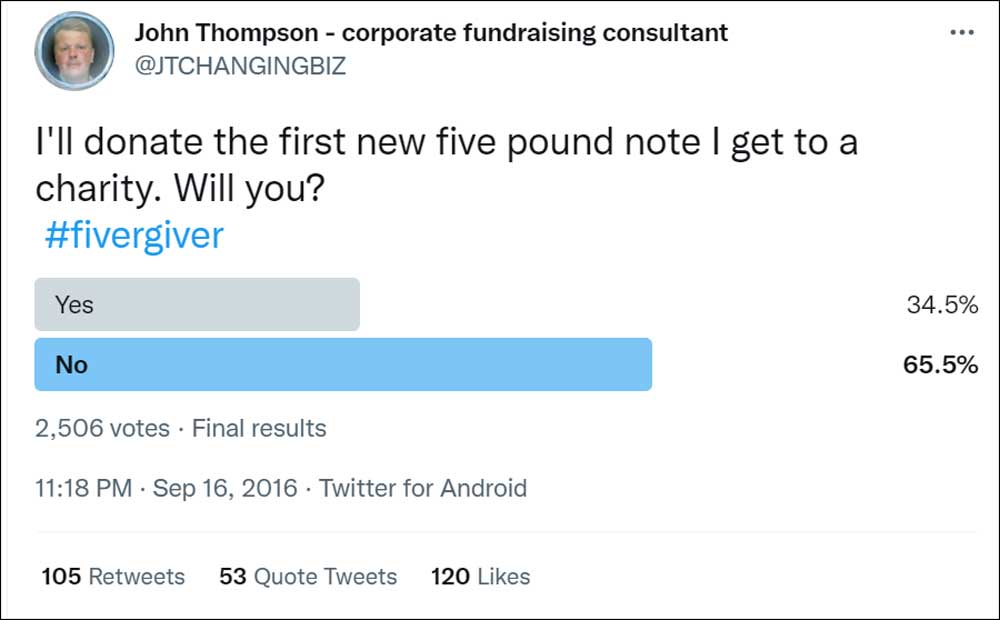
- #FirstFiver (2016) started late one night on Twitter by John Thompson. 2.5 million people joined in, raising over £12.5m for good causes. Here’s a thread of some of the #FirstFiver donations.
- Shocking events prompted in-memory fundraising like #FinishForMatt in 2018 which raised over £400k for small charity Brathay Trust and the death of Claire Squires which raised over £1m for Samaritans in 2012.
- Big events like #NoMakeUpSelfie (2014) and #ThumbsUpForSteven (2014) started on Facebook but were huge on Twitter too.
- Reactive fundraising – remember #WaistCoatWednesday by Blood Cancer UK in 2018.
- Fans of the Radio 4’s The Archers raised £173k for Refuge following a harrowing storyline in 2016.
- Sue Ryder’s Thorpe Hall Hospice sent an open letter to the thief who stole money on Christmas Day in 2017, generating hundreds of donations.
- Richard Herring patiently responded to all the people tweeting to ask when International Men’s Day was, raising thousands for Refuge.
- #TowelsForOwls appeal from Suffolk Owls (2018)

Making good things happen
- Rowans Hospice asked for help for a patient who loved Star Wars (2019)
- St Giles Hospice got thousands of messages and likes when they asked people to say happy birthday to Fred (2017).
- #FindMike (2014).
Sharing knowledge and insights
Twitter gave us access to people’s activities and thoughts as never before. This wasn’t always a good thing but here are some of the ways it was used for good.
- Rocur accounts – remember the @NHS account where a new person each week talked about their life or @LondonisYours or @FarmersOfTheUk which is still going.
- Account takeovers, like this VIP for Mencap (2019) and Sam for Scope (2018).
- Mascot accounts like @DaveTheWorm from Parkinson’s UK.
- Live tweeting from conferences.
- Live tweeting through TV shows.
- Live chats and Q&As.
- Quizzes and polls, like this from Brixton Food Bank and this dilemma from NW Ambulance (2018).
- #SocialCEOs – we saw personality and passion from some of the sectors leaders. An annual award ceremony led by Zoe Amar and Matt Collins was big news.
Raising awareness

- Gender Pay Gap Bot made a big impact in March when they used data to challenge performative comms for International Women’s Day. It continues to tweet.
- #MentalPatient was a huge response to a supermarket selling a Halloween costume in 2013.
- Leonard Cheshire used a tube strike to raise awareness about the accessibility of the tube network in 2014.
- #DuvetKnowItsChristmas with Shelter (2018)
- GiveBlood called out racism in their mentions (2017).
- RNLI responded to negative press (2019).
- Where was the outrage to the fires in the Amazon asked WWF in 2019. The tweet got 225k likes.
- Thousands of charities used Twitter to raise awareness about the signs of health conditions and domestic violence. How many lives saved? This from Diabetes UK was shared today, generating 1k+ likes and shares.
Innovation
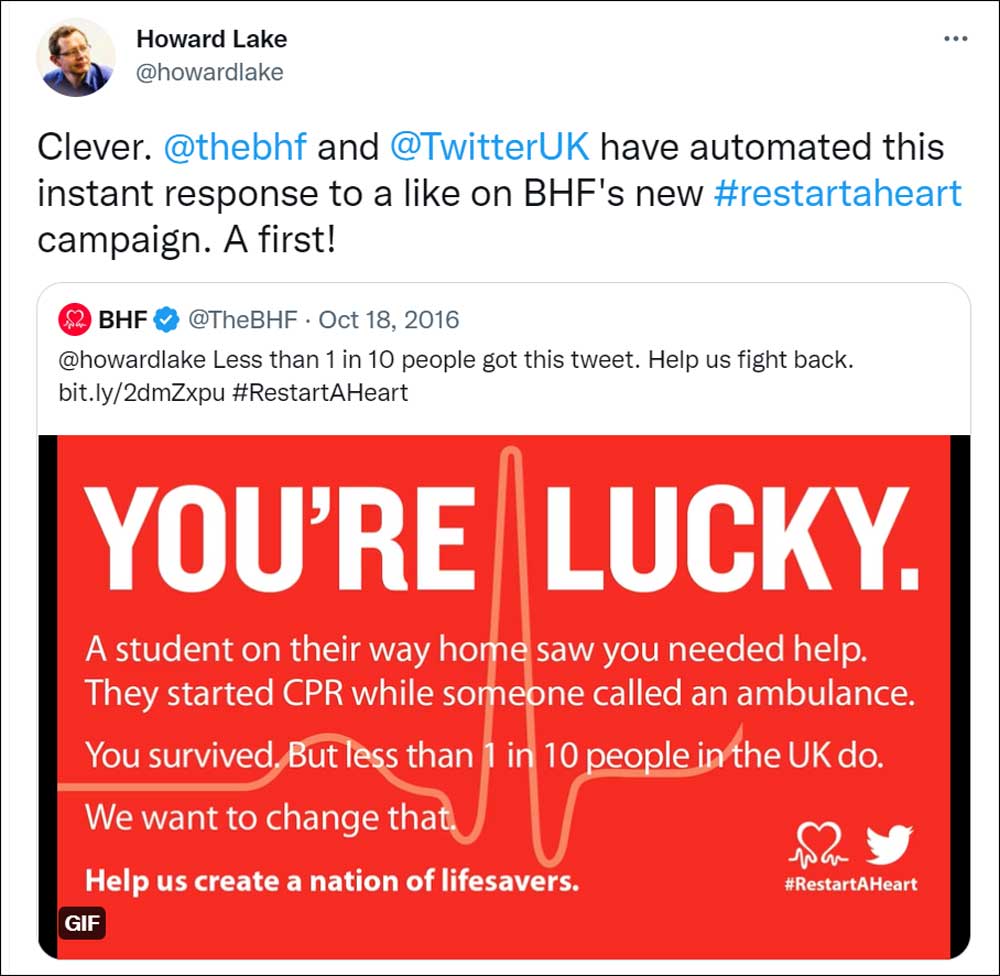
- #RestartAHeart – BHF in 2016 broke new ground using clever fuctionality to share heart attack survival rates.
- Breast Cancer Now generated personalised gifs for Wear It Pink supporters (2017), similar to this from National Trust / National Lottery.
- The @NHS account live tweeted an operation (2017).
- Interactive storytelling in Choose Your Own Adventure style like this one from RNIB and this from Trussell Trust in 2019
- And interactive games like this from Tower of London (2019).
- WWF’s #EndangeredEmoji in 2015 raised donations through emoji.

Fun
- Random awareness day comms. Did you join in with World Carrot Day or Halloween fun?
- There were many April Fools jokes like this gem from the National Trust.
- And so many memes and funny responsive comms such as the #DollyPartonChallenge (2020), #TetrisChallenge (2019), #MuseumMemesDay (2018). Without Twitter, would we have found out about the Absolute Unit?
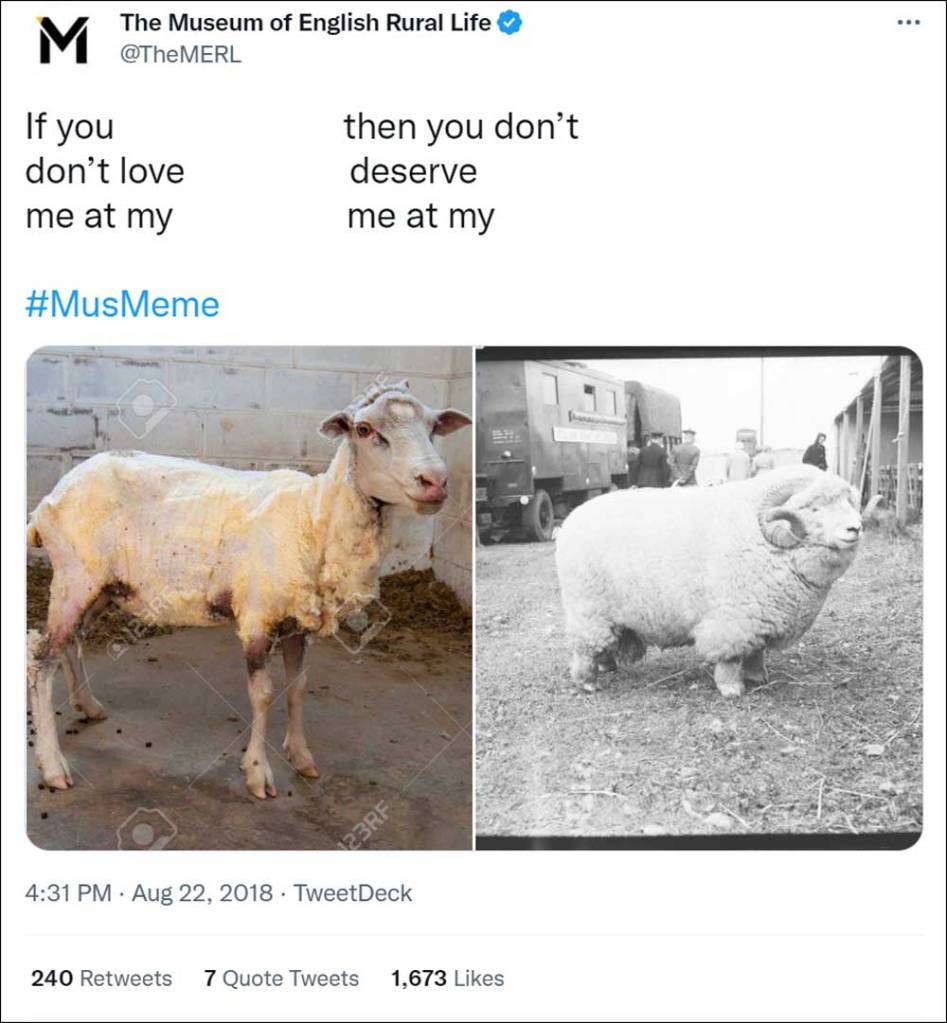
Cross-sector activity
- Big action events including #GivingTuesday, #TimeToTalkDay, #YouMadeItHappen (2019), #ReclaimSocial (2019) #OurDay, #RememberACharityWeek.
- 15k likes for Sarah Atkinson’s #ThisIsWhatACEOLooksLike in 2020 showing diverse, authentic leadership. Lots of other CEOs joined in.
- Twitter helped us speak up – see @NonGraduatesWelcome, @ShowTheSalary, @CharitySoWhite, @CharitySoStraight, @CharitySoAbled, plus various whistleblowing accounts.
Connection and support
Twitter has been a support channel, helping people connect with each other, discuss issues and form friendships and careers.
- #FollowFriday and #CharityTuesday were busy hashtags back in the day, helping people make new connections.
- #CharityHour has been hosting discussions and connecting people since 2014. They set a weekly theme and pose five questions.
- #CharityJobs has helped people find new roles.
- #FundraisingChat / #FRTweets started on Twitter in 2014 as a Friday discussion about all things fundraising. It then moved to Facebook a year later when the group got big.
- #nfpTweetUp was a regular in-person event in London which connected charity people working in digital media. It started in 2008 when we were all getting started with digital comms and social media. I don’t think I would have become a freelancer without this wonderful network.
Twitter gave us a chance to connect with our peers. Charities connected with theirs too, often talking and supporting each other’s messages.
Your highlights
What do you think about the potential loss of Twitter? Are you sticking around personally or planning to stop your charity using it? Is it time to move on?
Has Twitter been a force for good for you? What’s your highlight? What else good happened on here?
Update
Is it safe to stay here? Come along (for one-night only) to the #NFPTweetUp to discuss what the situation means for your charity and your own use.
Join us on Zoom. Thursday 24 Nov, 7 – 8.30pm. FREE! Book now.
